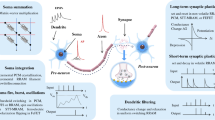Abstract
Since its conception in the mid 1950s, artificial intelligence has always been a hugely exciting, cross-disciplinary research endeavor. As the technology-driven modern world creates artifacts demonstrating increasing levels of sophistication and, perhaps, intelligence, it is necessary for practitioners in several fields to be familiar, to some degree, with some of the fundamental problems and challenges in the field of artificial intelligence. The goal in this paper is to highlight some of the foundational issues in the field of artificial intelligence and to reflect on the role of artificial intelligence in the context of a rapidly advancing modern world where breakthroughs such as memristive nano-devices enthuse practitioners beyond the realms of science fiction.


Similar content being viewed by others
References
Adleman L (1994) Molecular computation of solutions to combinatorial problems. Science 266:1021–1024
Albus JS, Bekey GA, Holland JH, Kanwisher NG, Krichmar JL, Mishkin M, Modha DS, Raichle ME, Shepherd GM, Tononi G (2007) A proposal for a decade of the mind initiative. Science 317(5843):1321
Anderson M, Anderson L (2010) Robot be good: a call for ethical autonomous machines. Sci Am October:15–24
Aono M, Hara M, Aihara K, Munakata T (2010) Amoeba-based emergent computing: combinatorial optimization and autonomous meta-problem solving. Int J Unconv Comput 6:89–108
Baruchi I, Ben-Jacob E (2007) Towards neuro-memory-chip: imprinting multiple memories in cultured neural networks. Phys Rev E 75. Article ID 050901
Berrar D, Sato N, Schuster A (2010) Quo vadis artificial intelligence? Adv Artif Intell. doi:10.1155/2010/629869
Brighton H, Selina H (2003) Introducing artificial intelligence. Icon Books, London
Brooks R (1990) Elephants don’t play chess. Robot Auton Syst 6:3–15
Chua L (1971) Memristor—the missing circuit element. IEEE Trans Circuit Theory 18(5):507–519
Chua L, Kang S (1976) Memristive devices and systems. Proc IEEE 64:209–223
Cohen DI (1996) Introduction to computer theory, 2nd edn. Wiley, New York
Desai S, Rolston J, Guo L, Potter S (2010) Improving impedance of implantable microwire multielectrode arrays by ultrasonic electroplating of durable plantinum black. Front Neuroeng 3(5). doi:10.3389/fneng.2010.00005
Feser E (2006) Philosophy of mind: a beginner’s guide. Oneworld Publications
Friedman R (2009) Reverse engineering the brain. Biomed Comput Rev 5(2):10–17
Grover L (1996) A fast quantum mechanical algorithm for database search. In: Proceedings of the 28th annual ACM symposium on the theory of computing (STOC), pp 212–219
Harnad S (1990) The symbol grounding problem. Physica D 42:335–346
Kotchetkov IS, Hwang BY, Appelboom G, Kellner CP, Connolly Jr ES (2010) Brain-computer interfaces: military, neurosurgical, and ethical perspective. Neurosurg Focus 28(5:E25) (available online)
Lipton J (1995) DNA solution to hard computational problems. Science 268:542–545
Mallon E, Pratt S, Franks N (2001) Individual and collective decision-making during nest site selection by the ant Leptothorax albipennis. Behav Ecol Sociobiol 50:352–359
Mermin DN (2007) Quantum computer science: an introduction. Cambridge University Press, Cambridge
Negnevitsky M (2004) Artificial intelligence—a guide to intelligent systems, 2nd edn. Addison Wesley, Harlow
Newell A, Simon HA (1976) Computer science as empirical inquiry: symbols and search. Commun ACM 19(3):113–126
Pershin Y, La Fontaine S, Di Ventra M (2008) Memristive model of amoeba’s learning. arXiv:0810.4179v2 [q-bio.CB]
Pfeifer R, Scheier C (2000) Understanding intelligence. The MIT Press, Cambridge
Pironio S, Acin A, Massar S, Boyer de la Giroday A, Matsukevich D, Maunz P, Olmschenk S (2010) Random numbers certified by Bell’s theorem. Nature 464:1021–1024
Schank R, Abelson R (1977) Scripts, plans, goals and understanding: inquiry into human knowledge structures. Psychology Press
Schuster A (2005) DNA databases. BioSystems 81(3):234–246
Schuster A (2007) Intelligent computing everywhere. Springer-Verlag, London
Schuster A (2008) Robust intelligent systems. Springer-Verlag, London
Schuster A (2008) Robustness in nature as a design principle for artificial intelligence. In: Schuster A (ed) Robust intelligent systems. Springer, New York, pp 165–188
Schuster A, Shapcott M, Adamson K, Bell DA (2000) A multiple approach to data analysis and uncertainty management in knowledge-based systems. Int J Intell Syst 15(2):93–116
Schuster A, Yamaguchi Y (2009) The survival of the fittest and the reign of the most robust—in biology and elsewhere. Minds Mach 19(3):361–389
Searle J (1980) Minds, brains and programs. Behav Brain Sci 3(3):417–457
Shor P (1994) Polynomial-time algorithms for prime factorization and discrete logarithms on a quantum computer. In: Proceedings of the 35th annual symposium on foundations of computer science, Santa Fe, NM, pp 20–22
Snider G, Williams R (2007) Nano/CMOS architectures using a field-programmable nanowire interconnect. Nanotechnology 18, 035204
Snider GS (2008) Cortical computing with memristive nanodevices. Sci-DAC Rev 10:58–65
Stix G (2005) Best-kept secrets. Sci Am 292:65–69
Strukov DB, Snider GS, Stewart DR, Williams RS (2008) The missing memristor found. Nat Biotechnol 453:80–83
Tagkopoulos I, Liu Y-C, Tavazoie S (2008) Anticipatory behavior within microbial genetic networks. Science 320(5881):1313–1317
Turing A (1950) Computing machinery and intelligence. Mind Mach 59:433–460
Author information
Authors and Affiliations
Corresponding author
Rights and permissions
About this article
Cite this article
Schuster, A., Yamaguchi, Y. From foundational issues in artificial intelligence to intelligent memristive nano-devices. Int. J. Mach. Learn. & Cyber. 2, 75–87 (2011). https://doi.org/10.1007/s13042-011-0016-1
Received:
Accepted:
Published:
Issue Date:
DOI: https://doi.org/10.1007/s13042-011-0016-1




